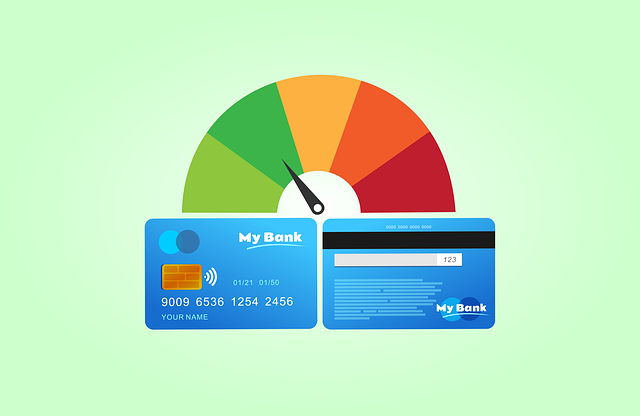Invoice financing presents a flexible alternative to traditional loans by allowing businesses to access cash by selling their accounts receivable at a discount, bypassing rigorous credit checks and personal guarantees. Compared to loans that offer larger sums but longer approval times, invoice financing provides faster access to funds (within days of invoice creation) and customizable solutions with potentially lower interest rates. Its strategic use optimizes cash flow, covers operational costs, and supports growth investments, especially beneficial for small and medium-sized enterprises (SMEs) and startups facing seasonal fluctuations or irregular payment cycles, as it aligns repayment terms with the natural cycle of accounts receivable.
Invoice financing is a game-changer for businesses seeking to optimize cash flow. This alternative funding method allows companies to access immediate capital by selling outstanding invoices before their due date. Unlike traditional loans, invoice financing provides flexible terms and targets unsaved revenue, offering a viable solution for cash-flow management.
This article explores the benefits of invoice financing, its distinctions from conventional loans, and practical strategies for businesses aiming to harness its power. We also present real-world examples, demonstrating the successful implementation of this innovative approach.
- Understanding Invoice Financing and Its Benefits
- How Invoice Financing Differs from Traditional Loans
- Strategies for Optimizing Cash Flow with Invoice Financing
- Real-World Examples of Successful Invoice Financing Implementation
Understanding Invoice Financing and Its Benefits

Invoice financing is an alternative funding method that offers businesses a more flexible and efficient way to manage their cash flow compared to traditional loans. Instead of relying on bank loans, companies can sell their outstanding invoices (i.e., accounts receivable) to a financial institution or invoice finance provider at a discount. This process provides immediate cash access, allowing businesses to fund their operations, pay bills, or invest in growth opportunities without the need for collateral.
One significant advantage of invoice financing over loans is its non-intrusive nature. It does not involve extensive credit checks or require personal guarantees, making it an attractive option for businesses that may have limited credit history or want to avoid complicating their financial structure. Additionally, invoice financing can be tailored to the specific needs of a company, offering more adaptability and potentially lower interest rates than conventional loans.
How Invoice Financing Differs from Traditional Loans

Invoice financing and traditional loans serve distinct purposes in a business’s financial strategy, with each approach offering unique advantages. Unlike traditional loans that are typically secured against physical assets or personal guarantees, invoice financing leverages a company’s outstanding invoices as collateral. This innovative funding method allows businesses to access working capital immediately, providing a quick infusion of cash flow.
When comparing invoice financing vs loans, the primary difference lies in timing and flexibility. Invoice financing often provides a faster turnaround, releasing funds within days of invoice creation. Moreover, it aligns with the cash conversion cycle, enabling businesses to manage their immediate financial needs. Traditional loans, while offering larger sums, may have longer approval processes and stricter eligibility criteria, making them less adaptable to short-term cash flow requirements.
Strategies for Optimizing Cash Flow with Invoice Financing

Invoice financing offers a strategic approach to optimizing cash flow, providing businesses with a powerful alternative to traditional loans. Unlike bank loans that often require collateral and stringent eligibility criteria, invoice financing focuses on the value of your outstanding invoices. This means businesses can access funds quickly by selling their accounts receivable at a discount, effectively bridging the gap between delivering goods or services and receiving payment.
By utilizing this method, companies gain immediate relief from cash flow constraints, enabling them to pay bills, fund operations, and even invest in growth opportunities. Moreover, invoice financing offers flexibility in terms of repayment, aligning with the natural cycle of accounts receivable. This is particularly advantageous for businesses with seasonal fluctuations or irregular payment cycles, ensuring a more manageable financial burden over time compared to loan repayments with fixed schedules.
Real-World Examples of Successful Invoice Financing Implementation

Many businesses have successfully leveraged invoice financing as a powerful tool to enhance their cash flow management, especially when compared to traditional loans. For instance, a small to medium-sized enterprise (SME) in the retail sector could use invoice financing to bridge the gap between fulfilling customer orders and receiving payment. Instead of waiting for invoices to be paid by clients, the SME can sell these outstanding invoices to a financier at a discount, instantly accessing working capital. This method provides immediate relief from cash flow constraints, allowing businesses to focus on growth opportunities rather than merely survival.
Another real-world scenario involves a technology startup with a unique product that experiences varying payment cycles due to its diverse customer base. By utilizing invoice financing, the startup can secure funding based on its future revenue streams, which are represented by outstanding invoices. This approach offers flexibility and enables the company to manage its cash flow more effectively, especially during periods of high demand when payments might be delayed. As a result, startups can avoid potential financial hurdles and reinvest savings into research and development or marketing efforts.






